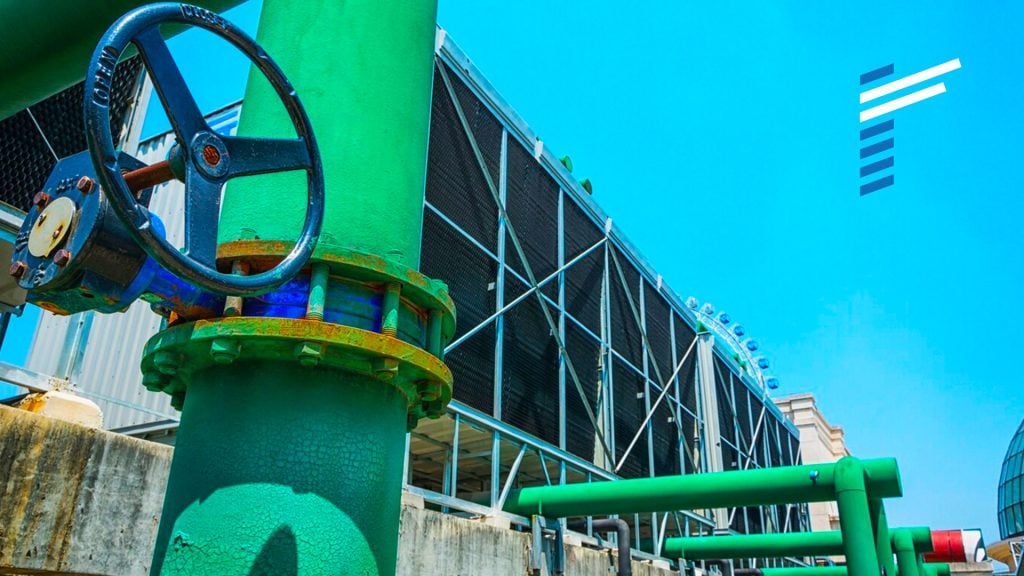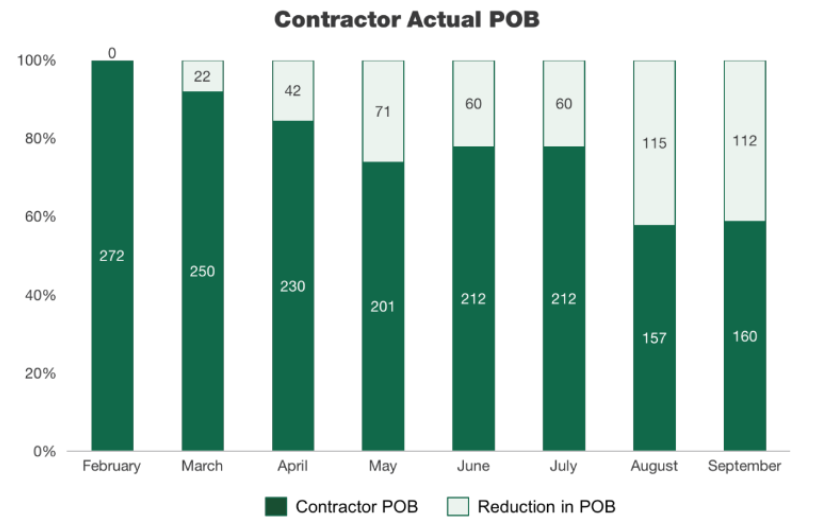At a Glance
A leading oil and gas company undertook a project with Renoir over 36 weeks for cost reduction and to drive efficiency. The following steps were highlighted as opportunities for improvement and were implemented and embedded within their existing processes:
- A lack of adherence to procedures including the Work Management System (WMS), Activity Planning (AP), Safe Control of Work (CoW) and Materials Management.
- Poor prioritisation and planning of work and lack of closeout discipline.
- KPIs were not driving efficiency, nor were they consistently reviewed or displayed.
- Lack of proper or sufficient time and resources given when assigning workloads.
- Job plans and database entries with information such as standard hours, Control of Work identification, resources, and materials were inaccurate. As a result, preventive maintenance activities were being based on inaccurate information.
- Inadequate start-of-shift meeting sequence, length and participation.
Key Results
↑ 59%
wrench time
↑219%
preventive maintenance compliance
↓ 98%
overdue backlog
↓ 41%
Reliability and Maintenance Personal On Board
Background
The client is one of the world’s leading oil and gas companies. It is vertically integrated and operates in all areas of the oil and gas industry, including upstream, refining, distribution and marketing, petrochemicals, power generation and trading. One of its operations lies in Southeast Asia and is a major multinational project involving the development of six gas fields.
The Challenge
Renoir was engaged to perform a 2-week business analysis to evaluate current performance and to identify and validate improvement opportunities for the client.
The studies highlighted improvement opportunities in defining and implementing each of the stages of its Work Management System for Maintenance Execution. Observational studies indicated that there was inadequate preparation prior to execution of work, as well as a lack of supervision during actual execution. Lack of performance reviews and unclear roles meant that inefficiencies in managing work were not appropriately addressed.
What We Did
An agreement was reached to carry out a 34-week project to optimise planning, scheduling and execution of work, drive efficiency and reduce costs for the client.
The project deliverables agreed upon with Renoir were:
- Achieving strict compliance amongst employees to the client’s WMS and CoW procedures
- Executable plans through improved planning and sequencing of all work-related activities, resources and support services.
- Institutionalised active management routines for frontline leaders to achieve work execution efficiency.
- Dashboards to measure performance of key activities related to work planning and execution at regular intervals and at the appropriate level.
- Clear and aligned roles and responsibilities, clear responsibility matrices for all key processes and interfaces relating to work planning and execution.

How change management fosters better acquisition integration

Oil & gas company improves efficiencies for $8m annual savings

How change management fosters better acquisition integration

Oil & gas company improves efficiencies for $8m annual savings
Identify improvement opportunities for cost savings and efficiency.
The project followed Renoir’s Focus Process®, where:
- Active participation and collaboration of all the client’s stakeholders took place during the Brown Paper exercise. This ensured the development of the optimum solutions and their subsequent buy-in during implementation.
- Critiques of the existing systems and processes were converted into opportunities as well as re-aligned with the company’s global procedures.
- Supporting Management Control Systems (focusing on tracking tools and reporting) were developed to improve the decision-making process by providing visibility to the correct level of the organisation. Engagements across all levels of the organisation were carried out during the design and development of a White Paper.
- Work Planning, Scheduling, and Execution Operating Procedures were developed, in compliance with the client’s existing WMS, CoW and AP procedures. This added a level of granularity and focus to all processes.
Implementation
The Steering Committee – chaired by the client’s VP of Operations, Asia Pacific – endorsed the project design. Weekly status updates were reviewed during Management Action Team meetings at the site and were chaired by the Site Manager. These meetings were embedded into existing process and handed over to the client’s personnel so that they became sustainable over time. The team then became key drivers of change for further progress once the project ended.
Roll-out and on-the-job coaching of the designed system elements were conducted. Compliance with the new practices was monitored by carrying out behavioral audits to provide visibility on the implementation status. These behavioral audits also became embedded into new ways of working.
Implementation involved a significant demobilisation of contractor crews, which was successfully undertaken by the Management Action Teams.
Additionally, the following steps were conducted to ensure that implemented practices could be sustained and remain for the client:
- Creation and agreement of the Work Planning, Scheduling, and Execution Operating Procedures. Sustainability Plans that were developed for the Reliability & Maintenance Department.
- Roles and responsibilities were updated to reflect the re-organisation and provide clarity at a working level
The Results
The ultimate objectives of the project were to drive efficiency and cost reduction. Through the White Paper, work management became more efficient and over time, and the client required less contractors to perform the same amount of work.
Contractor demobilisation commenced mid-year. Since then, additional reductions have been achieved and will continue to get to the optimal number of POB (personnel on board). The goal here is to ultimately increase wrench time with an optimal number of staff.
The table below reflects the 4 key performance indicators for the Project:
In addition to the above benefits, a review and update of 95% of all job plans and preventive maintenance routines within the Work Management database was undertaken along with development of 93% of attributes for the entire tag population.
“Through this project with Renoir, we were able to look at the end-to-end life of a work permit or a work order in the same way as Toyota looks at a car in the production line. In doing so, we were able to eliminate waste, improve efficiency and ultimately energise people as they can deliver more work with smaller teams.”
Deputy Operations Director & R&M Manager
Identify cost-saving opportunities for greater profitability.














